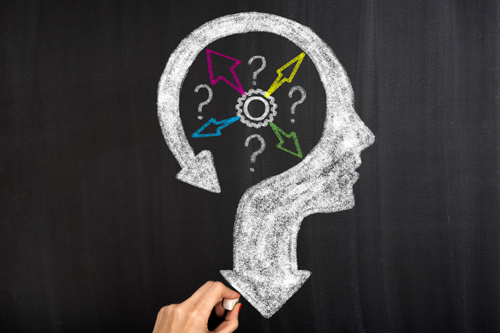‘Mindreading’ neurons simulate decisions of social partners
Scientists have identified special types of brain cells that may allow us to simulate the decision-making processes of others, thereby reconstructing their state of mind and predicting their intentions. Dysfunction in these ‘simulation neurons’ may help explain difficulties with social interactions in conditions such as autism and social anxiety.

Researchers at the University of Cambridge identified the previously-unknown neuron type, which they say actively and spontaneously simulates mental decision processes when social partners learn from one another.
The study, published in Cell, suggests that these newly-termed ‘simulation neurons’ – found in the amygdala, a collection of nerve cells in the temporal lobe of the brain – allow animals (and potentially also humans) to reconstruct their social partner’s state of mind and thereby predict their intentions.
The researchers go on to speculate that if simulation neurons became dysfunctional this could restrict social cognition, a symptom of autism. By contrast, they suggest overactive neurons could result in exaggerated simulation of what others might be thinking, which may play a role in social anxiety.
The study’s lead author, Dr. Fabian Grabenhorst from the Department of Physiology, Development and Neuroscience, says: “We started out looking for neurons that might be involved in social learning. We were surprised to find that amygdala neurons not only learn the value of objects from social observation but actually use this information to simulate a partner’s decisions.”
Simulating others’ decisions is a sophisticated cognitive process that is rooted in social learning. By observing a partner’s foraging choices, for instance, we learn which foods are valuable and worth choosing. Such knowledge not only informs our own decisions but also helps us predict the future decisions of our partner.
Psychologists and philosophers have long suggested that simulation is the mechanism by which humans understand each other’s minds. Yet, the neural basis for this complex process has remained unclear. The amygdala is well known for its diverse roles in social behaviour and has been implicated in autism. Until now, however, it was unknown whether amygdala neurons also contribute to advanced social cognition, such as simulating others’ decisions.
The study recorded activity from individual amygdala neurons as macaque monkeys took part in an observational learning task. Sat facing each other with a touch screen between them, the animals took turns in making choices to obtain rewards. To maximise their fruit juice reward, the animals were required to learn and track the reward probabilities associated with different pictures displayed on the screen.
The study allowed one animal to observe its partner’s choices so that they could learn the pictures’ reward values. Once the pictures switched between them, the observing animal could make use of this knowledge when it was their turn to choose.
Surprisingly, the researchers found that when an animal observed its partner, the observer’s amygdala neurons seemed to play out a decision computation. These neurons first compared the reward values of the partner’s choice options before signalling the partner’s likely choice, consistent with a simulated decision process. Importantly, these activity patterns occurred spontaneously, well before partner’s choices and without decision requirement for the observer.
Based on their findings, the scientists created the first computer model of the amygdala’s neural circuits involved in social cognition. By showing how specific types of neurons influence one another, this model suggests that the amygdala contains a ‘decision circuit’ which works out the animal’s own choices and a separate ‘simulation circuit’ which computes a prediction of the social partner’s choice.
Grabenhorst said: “Simulation and decision neurons are closely intermingled within the amygdala. We managed to distinguish between them and their different functions by carefully examining one neuron at a time. This would not have been possible with human brain imaging techniques that measure the averaged activity of large numbers of neurons.”
“We think that simulation neurons are important building blocks for social cognition – they allow animals to reconstruct their partners’ mental decision processes. Simulation neurons could also constitute simple precursors for the amazing cognitive capacities of humans, such as ‘Theory of Mind’.”
The scientists suggest that if simulation neurons were dysfunctional or completely absent, this could impoverish social behaviour. Grabenhorst says: “If simulation neurons don’t function properly, a person might not be able to relate very well to the mental states of others. We know very little about how specific neuron types contribute to social cognition and to the social challenges faced by individuals with autism. By identifying specific neurons and circuit mechanisms for mental simulation, our study may offer new insights into these conditions.”
yogaesoteric
December 8, 2019
